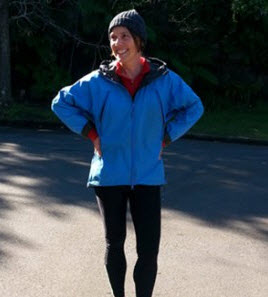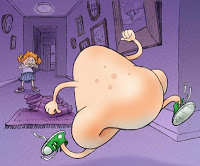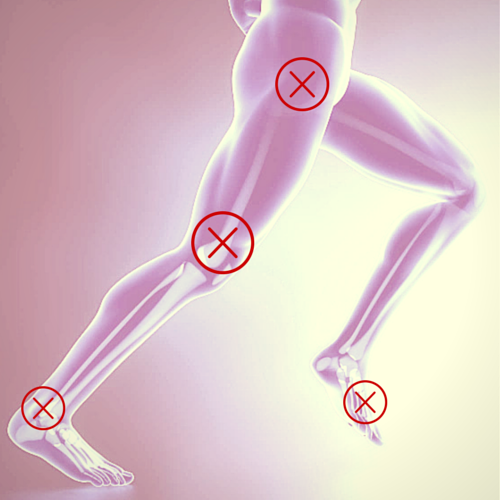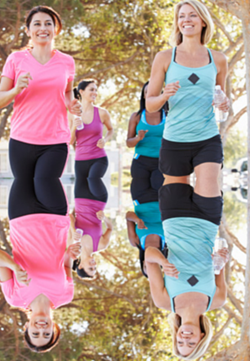It’s Woman Vs Winter
So, you’re alarm’s just startled you awake and you’re wondering why. It seems awfully cold when you stick your hand out onto the wrong side of your beautiful doona cocoon. Come to think of it, there’s no light sneaking in through that slit in the curtains. Not much seems to be happening at all out there. And it’s cold. You ask yourself again precisely why it was you thought it would be a good idea to get up early and run.
You could just stay in bed another 30 minutes, another hour…but then, the day might overtake you again like it did yesterday, and you won’t get a run in at all. You could forget about that promise you made to yourself in April about maintaining your fitness over winter. Or, you could rug up and get out there, and feel absolutely awesome for the rest of the day, and very likely the next day as well!
It is hard sometimes to get out running on a wintery day, but mostly, once you’re out there, you don’t regret it. I don’t think I’ve ever said to myself “I wish I hadn’t done that run”. Have you ever regretted going for a run? (Not counting the time you trod in dog poo, or fell over in front of the local rugby team).
Maintaining Enthusiasm
To help keep you enthusiastic about running in the cold weather, you can try a few tactics such as
- Run with other people – it makes it more fun, and if you’re running with others, you’re more likely to turn up
- Run somewhere beautiful when you can run during the day
- Have a goal in mind such as a race in August or September
- Have a goal such as running a certain number of times /kms/minutes per week or month.
- And it’s always a good idea to remind yourself how good you feel after a run.
Making Winter Running More Comfortable
Here are few practical tips to make your winter running more comfortable
Gloves. Great if you’re running in the early morning particularly. Polyester, sweat-wicking fabrics are good for well, not getting sweaty hands inside your gloves, but they won’t be very wind or water resistant. Gloves with insulated uppers and weather proof membranes are good for poor weather conditions, but you might find they get a bit hot. Some lightweight polyester gloves are probably going to be enough for you during our Sydney winters. You’ll probably find after 20 minutes or so you want to take them off, so make sure you have a pair you can stuff in a pocket or in the waistband of your tights
Tights. Wear them. Full length, tucked into your socks. I’m amazed at the number of people who turn up to running training in ¾ running tights and complain about the cold! Enough said I think.
Beanies. Sartorially inelegant, but they have two uses. Obviously, they are pretty handy for keeping your head warm, and they’re also great if you suffer from ear aches when you run in cold weather.
Headbands. If you don’t want to go the full beanie look, grab a headband to cover your ears if you’re an ear ache sufferer. Just a little bit of warmth around your ears can really make a difference
Lip Balm will not only help keep your lips succulent, you can apply it round your nostrils and around your eyes to help prevent the aging effects of wind burn.
Hats are really good for keeping the rain out of your eyes. Few people really love running in the rain, so you’ll usually have the streets and parks to yourself on a rainy day. Running in light rain can be really beautiful. On cold drizzly days I pretend I’m in the Blue Mountains where it’s supposed to be cold and drizzly. Somehow it makes a difference.
Wear reflective clothing. You’re more likely to be running in the dark in winter, so make sure your clothing has some reflective strips on it so that you can be seen. You could also run with a light, which of course will not only help people see you, but it could be useful to see where you’re going!
Warm up a bit before you leave the house. Do a few calisthenics, star jumps, running on the spot, push-ups, running up and down your stairs several times. You’ll be surprised how quickly you can warm up, and it makes it a lot easier to get out the door. And on that note, running during winter will help you warm up for the rest of the day. I’m freeze most days in winter until I get out and move.
Run into the wind on the day out. If you can work it so that you have the wind blowing into your face on the way out, you’ll find that the sweat you’ve worked up won’t chill you as much on the way back, with the wind blowing from behind you.
Wear less than you think is necessary. About a layer less than you need to be comfortable at the start of your run is the best bet. You’ll warm up quickly, and if you have too many layers on, you’ll either have to run with something tied around your middle, or run feeling too hot. Either way, you’re likely to get sweaty. Eventually, that could leave you in a cold sweat for most of your run.
Wear a wind resistant shell. You’ll always find running in windy conditions more pleasant if you have a light, wind resistant jacket. Often you don’t need much more than a t-shirt underneath (and some pants would be good I guess).
Use the hairdryer on your feet. If you can’t stand the thought of getting out there because your feet will freeze, warm your shoes and your feet up before hand with your hair dryer. If you’re driving to the start of your run, have your car heater on your feet.
Change quickly post run. Get out of your wet or damp, sweaty clothes quickly. Take a change of clothes with you if you’re not finishing your run at home, and get out of your damp sports bra, as well as changing your top.
Don’t let the winter cold numb you. Be open to the possibilities of winter running. Let the cold sharpen your senses. Experience your world a little differently. Embrace the cold weather. It’s winter after all, and it doesn’t last too long in Sydney. Before you know it, you’ll be complaining about the heat!
If you need a little company for your winter running, join our winter running groups. Your free trial is available now!









